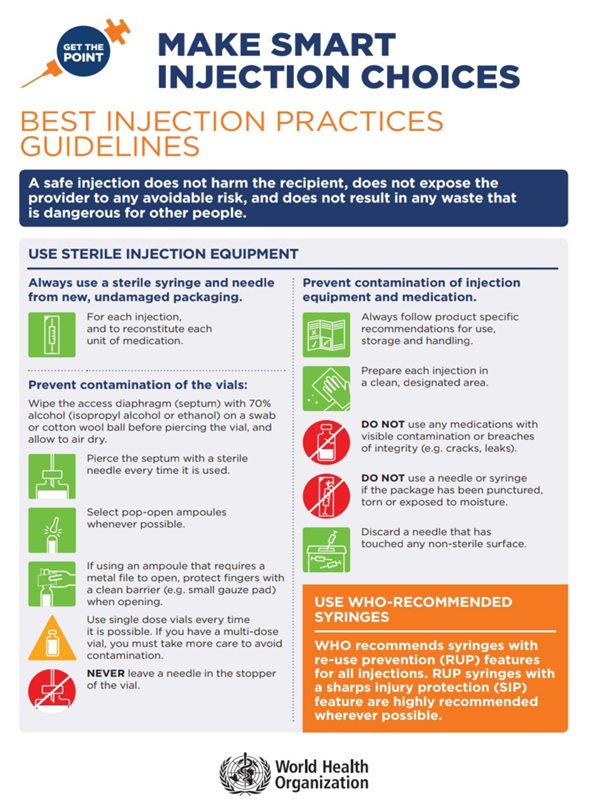PROFESSOR MOHAMMAD SULTAN KHUROO | DR. TASADUK HUSSAIN ITOO
Hepatitis is an inflammation of the liver tissue. The condition has five major viral varieties including various metabolic forms. Drug and substance abuse in particular alcoholism are closely linked with hepatitis. In fact, drug abuse and excessive drinking of alcohol can be responsible for the development and spread of the condition. Most commonly two forms of viral hepatitis are associated with alcohol and drug abuse — Hepatitis B and Hepatitis C – that are emerging as an issue of global public health concern. In general, Hepatitis B (HBV) and Hepatitis C (HCV)–both are contracted through contact with infected body fluids including blood, semen, and vaginal fluids. The most common methods by which HBV and HCV spreads– is through unprotected sexual contact and contaminated needle sharing.
Hepatitis B
Hepatitis B is a potentially life-threatening liver infection caused by the hepatitis B virus (HBV) — that attacks the liver and can cause both acute and chronic forms. The virus is most commonly transmitted from mother to child during birth and delivery; also spread by needle stick injury, tattooing, piercing and exposure to infected blood and body fluids — such as saliva and menstrual, vaginal and seminal fluids during sex with an infected partner. Moreover, transmission of the virus may also occur through the reuse of contaminated needles and syringes or sharp objects either in health care settings, in the community or among persons who inject drugs. Sexual transmission is more prevalent in unvaccinated persons with multiple sexual partners. WHO estimates that nearly 1.5 million new infections are diagnosed each year with hepatitis B globally. It can cause chronic infection and puts people at high risk of death from cirrhosis and liver cancer. Hepatitis B can be prevented by vaccines that are safe, available and effective, besides encouraging the use of safe injection practices.
Hepatitis C
Hepatitis C is an inflammation of the liver caused by the hepatitis C virus — that can cause both acute and chronic hepatitis –ranging in severity from a mild illness to serious, lifelong illnesses including liver cirrhosis and cancer. The hepatitis C virus is a blood- borne virus and most infection occur through exposure to blood from unsafe injection practices, unsafe health care, unscreened blood transfusions, injection drug use and sexual practices that lead to exposure to blood. Today, most people become infected with the hepatitis C virus by sharing needles or other equipment used to prepare and inject drugs. As per WHO, around 58 million people have chronic hepatitis C virus infection, with about 1.5 million new infections occurring per year globally. There are an estimated 3.2 million adolescents and children with chronic hepatitis C infection. The best way to prevent hepatitis C is by avoiding risky behaviours that can spread the disease, especially through injecting drugs.
Understanding the causal relationship between drug abuse and viral hepatitis
Drug and substance abuse places people at particular risk for contracting viral hepatitis. Engaging in risky behaviours that often accompanies drug abuse increases the risk of contracting HBV and, less frequently, HCV. People who inject drugs are at high risk for contracting HBV and HCV from shared needles and other drug preparation equipment, which exposes them to bodily fluids from other infected people. Because drug abuse often impairs judgement, people who inject drugs repeatedly engage in these unsafe behaviours, which can increase their risk of contracting viral hepatitis.
As per research studies, each person who injects drugs infected with HCV is likely to infect about twenty others, and that this rapid transmission of the disease occurs within the first three years of initial infection. Moreover, drug and alcohol abuse can also directly damage the liver, increasing risk for chronic liver disease and cancer among those infected with hepatitis. This shows that early detection and treatment of hepatitis infections in people who inject drugs and engage in heavy alcohol consumption–is crucial to protect both the health of the person and that of the community.
Moreover, people with hepatitis who inject drugs often have several other health conditions at the same time, including mental illness and HIV/AIDS, thus requiring care from multiple health care providers. Substance use disorder treatment is critical for drug abusers, as it can reduce risky behaviours that increase the chance of transmitting hepatitis. Research studies have shown that patients with hepatitis receiving medication-assisted treatment for their substance addiction can be safely treated with antiviral medications.
Recommendations
- Not abusing drugs. This decreases the chance of engaging in unsafe behaviour, such as sharing drug-use equipment and having unprotected sex, which can lead to these infections.
- Getting tested and treated for viral infection. People who inject drugs should get tested for HIV, HBV, and HCV. Those who are infected may look and feel fine for years and may not even be aware of the infection. So, testing is needed to help prevent the spread of disease. Getting treatment if needed.
- Pre-exposure prophylaxis (PrEP) for HIV. PrEP is when people who are at significant risk for contracting HIV take a daily dose of HIV medications to prevent them from getting the infection. Research studies have shown that PrEP has been effective in reducing the risk of HIV infection in people who inject drugs.
- Post-exposure prophylaxis (PEP) for HIV. PEP is when people take anti-retroviral medicines to prevent becoming infected after being potentially exposed to HIV. According to the Centers for Disease Control and Prevention (CDC) , PEP should be used within 72 hours after a recent possible exposure and only be used in emergency situations.
- Getting vaccinated for HBV. If one lives in the same household, have sexual contact with or share needles with a person with HBV, then it is recommended that one should get vaccinated to prevent transmission.
- Getting treatment for substance use disorder. Attending a treatment centre will likely improve the likelihood of successful recovery from substance use, especially in the short term, and could therefore improve the chances that the individual recovers from hepatitis.
- WHO campaign for worldwide use of “smart” syringes — making injections safe. Use of the same syringe or needle to give injections to more than one person is driving the spread of a number of deadly infectious diseases worldwide, particularly hepatitis B and C. As per a study sponsored by WHO, which focused on the most recent available data — estimated that up to 1.7 million people were infected with hepatitis B virus, up to 315 000 with hepatitis C virus and as many as 33 800 with HIV through an unsafe injection. Millions of people could be protected from infections acquired through unsafe injections if all healthcare programmes encourage only one-time use of syringes.
For these reasons, WHO has launched a new policy on injection safety to tackle the pervasive issue of unsafe injections. Everyone has a role to play in fostering safe injection practices — patients and communities can play their part in safe injections by being aware of the risks of unsafe injections — ensure that injections are delivered with single-use syringes and needles opened from new packets.
(Professor Mohammad Sultan Khuroo is a renowned gastroenterologist. He can be mailed at: [email protected]. Dr. Tasaduk Hussain Itoo is a Physician, educator, columnist and public speaker. He can be mailed at [email protected])








